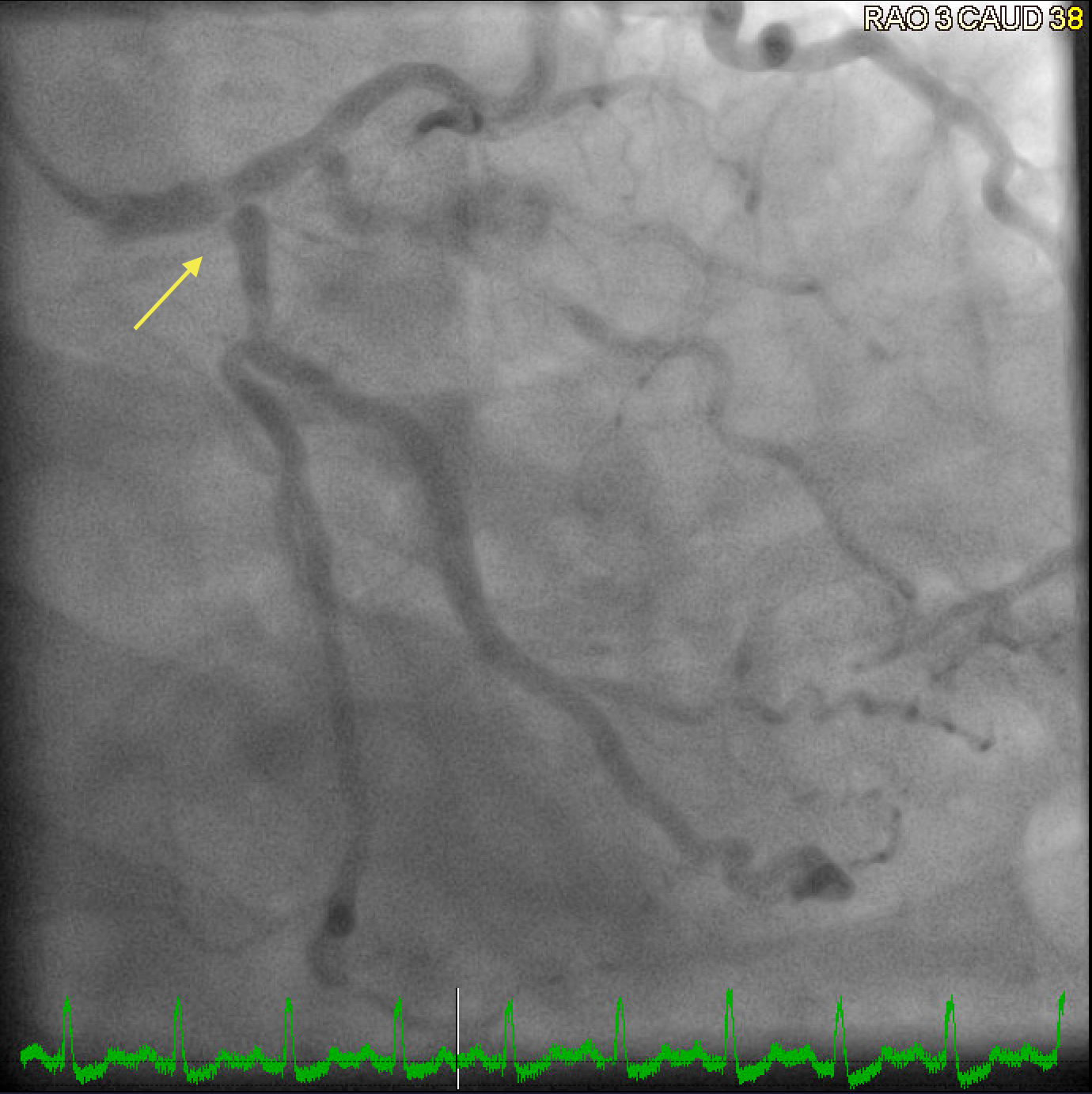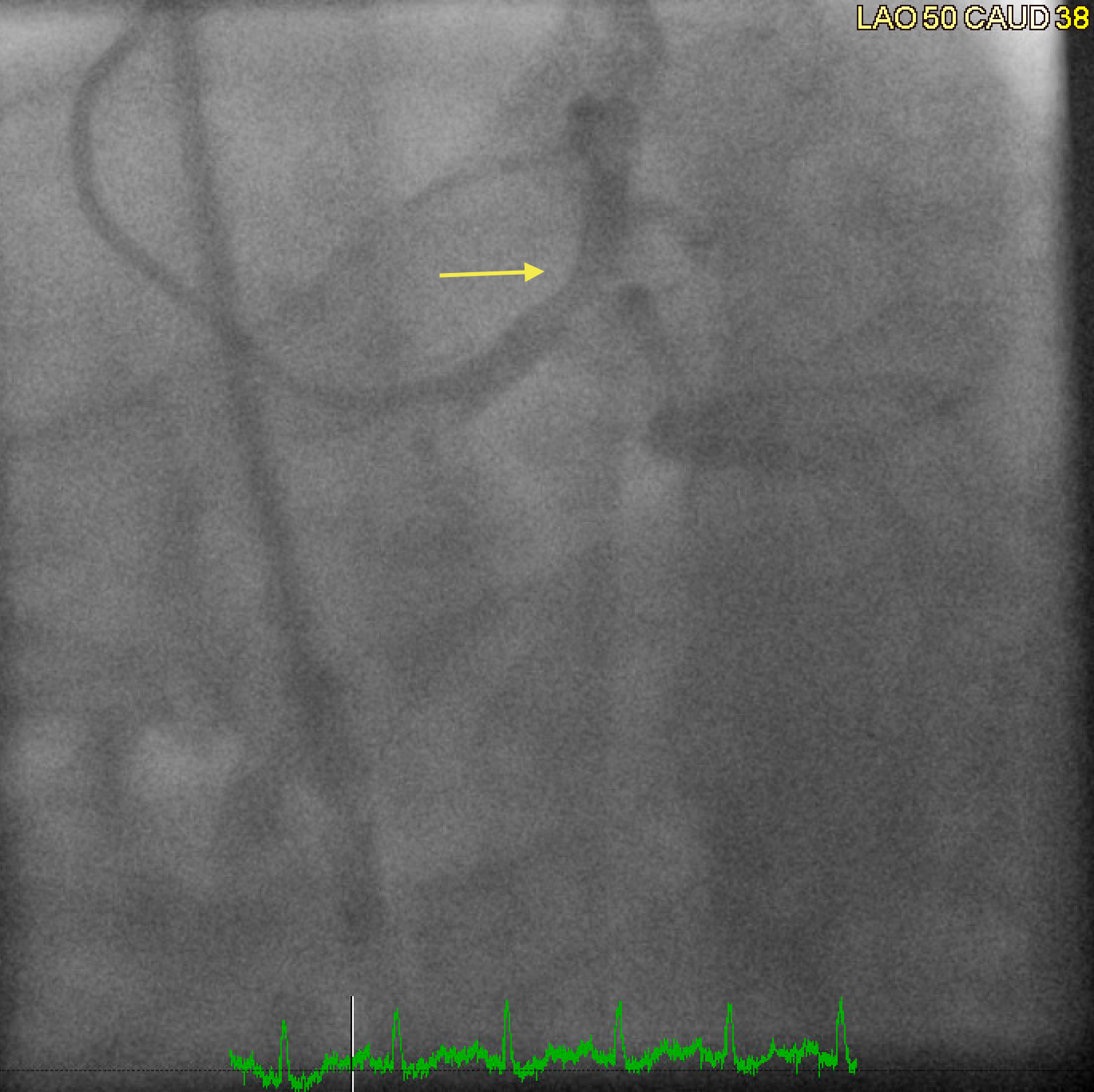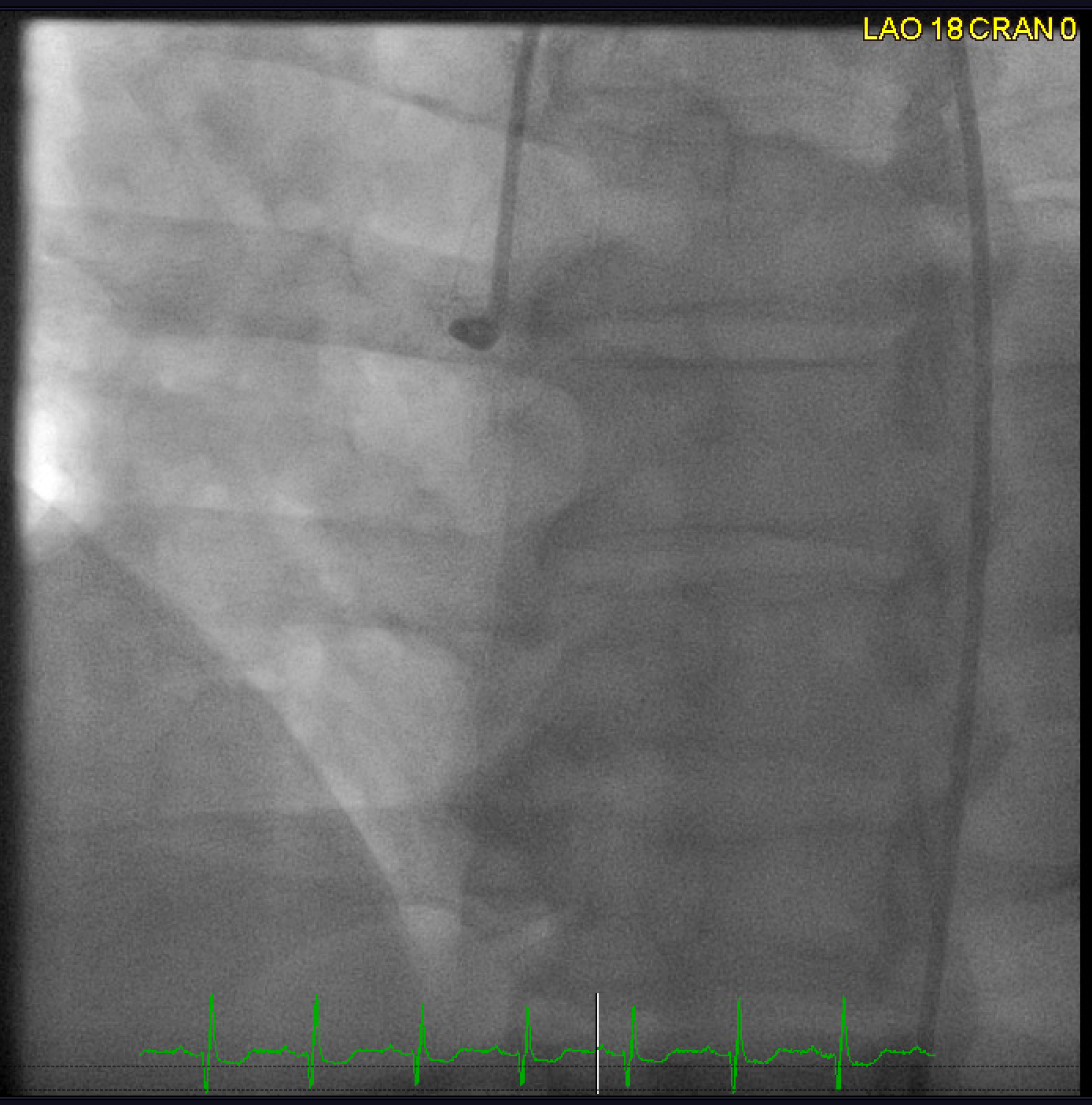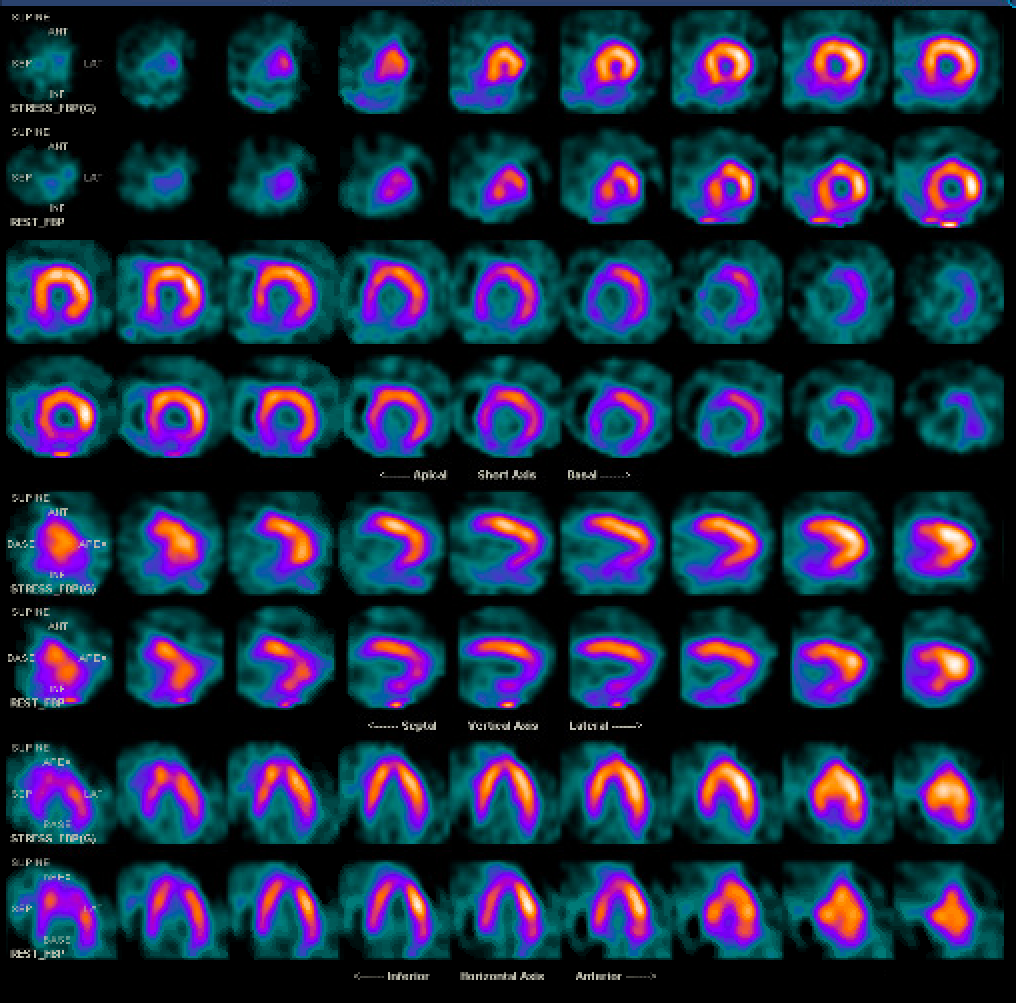[1]
Early Breast Cancer Trialists' Collaborative Group (EBCTCG), Darby S, McGale P, Correa C, Taylor C, Arriagada R, Clarke M, Cutter D, Davies C, Ewertz M, Godwin J, Gray R, Pierce L, Whelan T, Wang Y, Peto R. Effect of radiotherapy after breast-conserving surgery on 10-year recurrence and 15-year breast cancer death: meta-analysis of individual patient data for 10,801 women in 17 randomised trials. Lancet (London, England). 2011 Nov 12:378(9804):1707-16. doi: 10.1016/S0140-6736(11)61629-2. Epub 2011 Oct 19
[PubMed PMID: 22019144]
Level 1 (high-level) evidence
[2]
Raghunathan D, Khilji MI, Hassan SA, Yusuf SW. Radiation-Induced Cardiovascular Disease. Current atherosclerosis reports. 2017 May:19(5):22. doi: 10.1007/s11883-017-0658-x. Epub
[PubMed PMID: 28315200]
[3]
da Silva RMFL. Effects of Radiotherapy in Coronary Artery Disease. Current atherosclerosis reports. 2019 Nov 19:21(12):50. doi: 10.1007/s11883-019-0810-x. Epub 2019 Nov 19
[PubMed PMID: 31741087]
[4]
Groarke JD, Tanguturi VK, Hainer J, Klein J, Moslehi JJ, Ng A, Forman DE, Di Carli MF, Nohria A. Abnormal exercise response in long-term survivors of hodgkin lymphoma treated with thoracic irradiation: evidence of cardiac autonomic dysfunction and impact on outcomes. Journal of the American College of Cardiology. 2015 Feb 17:65(6):573-83. doi: 10.1016/j.jacc.2014.11.035. Epub
[PubMed PMID: 25677317]
[5]
Filopei J, Frishman W. Radiation-induced heart disease. Cardiology in review. 2012 Jul-Aug:20(4):184-8. doi: 10.1097/CRD.0b013e3182431c23. Epub
[PubMed PMID: 22314140]
[6]
Swerdlow AJ, Higgins CD, Smith P, Cunningham D, Hancock BW, Horwich A, Hoskin PJ, Lister A, Radford JA, Rohatiner AZ, Linch DC. Myocardial infarction mortality risk after treatment for Hodgkin disease: a collaborative British cohort study. Journal of the National Cancer Institute. 2007 Feb 7:99(3):206-14
[PubMed PMID: 17284715]
[7]
Hancock SL, Tucker MA, Hoppe RT. Factors affecting late mortality from heart disease after treatment of Hodgkin's disease. JAMA. 1993 Oct 27:270(16):1949-55
[PubMed PMID: 8411552]
[8]
Darby SC, Ewertz M, McGale P, Bennet AM, Blom-Goldman U, Brønnum D, Correa C, Cutter D, Gagliardi G, Gigante B, Jensen MB, Nisbet A, Peto R, Rahimi K, Taylor C, Hall P. Risk of ischemic heart disease in women after radiotherapy for breast cancer. The New England journal of medicine. 2013 Mar 14:368(11):987-98. doi: 10.1056/NEJMoa1209825. Epub
[PubMed PMID: 23484825]
[9]
Om A, Ellahham S, Vetrovec GW. Radiation-induced coronary artery disease. American heart journal. 1992 Dec:124(6):1598-602
[PubMed PMID: 1462919]
[10]
Bradley JD,Paulus R,Komaki R,Masters G,Blumenschein G,Schild S,Bogart J,Hu C,Forster K,Magliocco A,Kavadi V,Garces YI,Narayan S,Iyengar P,Robinson C,Wynn RB,Koprowski C,Meng J,Beitler J,Gaur R,Curran W Jr,Choy H, Standard-dose versus high-dose conformal radiotherapy with concurrent and consolidation carboplatin plus paclitaxel with or without cetuximab for patients with stage IIIA or IIIB non-small-cell lung cancer (RTOG 0617): a randomised, two-by-two factorial phase 3 study. The Lancet. Oncology. 2015 Feb;
[PubMed PMID: 25601342]
Level 1 (high-level) evidence
[11]
Andersen R, Wethal T, Günther A, Fosså A, Edvardsen T, Fosså SD, Kjekshus J. Relation of coronary artery calcium score to premature coronary artery disease in survivors }15 years of Hodgkin's lymphoma. The American journal of cardiology. 2010 Jan 15:105(2):149-52. doi: 10.1016/j.amjcard.2009.09.005. Epub 2009 Nov 14
[PubMed PMID: 20102909]
[12]
van Nimwegen FA, Schaapveld M, Cutter DJ, Janus CP, Krol AD, Hauptmann M, Kooijman K, Roesink J, van der Maazen R, Darby SC, Aleman BM, van Leeuwen FE. Radiation Dose-Response Relationship for Risk of Coronary Heart Disease in Survivors of Hodgkin Lymphoma. Journal of clinical oncology : official journal of the American Society of Clinical Oncology. 2016 Jan 20:34(3):235-43. doi: 10.1200/JCO.2015.63.4444. Epub 2015 Nov 16
[PubMed PMID: 26573075]
[13]
DeZorzi C. Radiation-Induced Coronary Artery Disease and Its Treatment: A Quick Review of Current Evidence. Cardiology research and practice. 2018:2018():8367268. doi: 10.1155/2018/8367268. Epub 2018 Oct 16
[PubMed PMID: 30410795]
[14]
Cheng YJ, Nie XY, Ji CC, Lin XX, Liu LJ, Chen XM, Yao H, Wu SH. Long-Term Cardiovascular Risk After Radiotherapy in Women With Breast Cancer. Journal of the American Heart Association. 2017 May 21:6(5):. doi: 10.1161/JAHA.117.005633. Epub 2017 May 21
[PubMed PMID: 28529208]
[15]
Takx RAP, Vliegenthart R, Schoepf UJ, Pilz LR, Schoenberg SO, Morris PB, Henzler T, Apfaltrer P. Coronary artery calcium in breast cancer survivors after radiation therapy. The international journal of cardiovascular imaging. 2017 Sep:33(9):1425-1431. doi: 10.1007/s10554-017-1119-x. Epub 2017 Mar 24
[PubMed PMID: 28342038]
[16]
van Nimwegen FA, Schaapveld M, Janus CP, Krol AD, Petersen EJ, Raemaekers JM, Kok WE, Aleman BM, van Leeuwen FE. Cardiovascular disease after Hodgkin lymphoma treatment: 40-year disease risk. JAMA internal medicine. 2015 Jun:175(6):1007-17. doi: 10.1001/jamainternmed.2015.1180. Epub
[PubMed PMID: 25915855]
[17]
Rehammar JC, Jensen MB, McGale P, Lorenzen EL, Taylor C, Darby SC, Videbæk L, Wang Z, Ewertz M. Risk of heart disease in relation to radiotherapy and chemotherapy with anthracyclines among 19,464 breast cancer patients in Denmark, 1977-2005. Radiotherapy and oncology : journal of the European Society for Therapeutic Radiology and Oncology. 2017 May:123(2):299-305. doi: 10.1016/j.radonc.2017.03.012. Epub 2017 Mar 30
[PubMed PMID: 28365142]
[18]
Altınok A, Askeroğlu O, Doyuran M, Çağlar M, Cantürk E, Erol C, Beşe N. Dosimetric evaluation of right coronary artery in radiotherapy for breast cancer. Medical dosimetry : official journal of the American Association of Medical Dosimetrists. 2019 Autumn:44(3):205-209. doi: 10.1016/j.meddos.2018.06.006. Epub 2018 Aug 28
[PubMed PMID: 30170990]
[19]
Venkatesulu BP, Mahadevan LS, Aliru ML, Yang X, Bodd MH, Singh PK, Yusuf SW, Abe JI, Krishnan S. Radiation-Induced Endothelial Vascular Injury: A Review of Possible Mechanisms. JACC. Basic to translational science. 2018 Aug:3(4):563-572. doi: 10.1016/j.jacbts.2018.01.014. Epub 2018 Aug 28
[PubMed PMID: 30175280]
[20]
Armanious MA, Mohammadi H, Khodor S, Oliver DE, Johnstone PA, Fradley MG. Cardiovascular effects of radiation therapy. Current problems in cancer. 2018 Jul:42(4):433-442. doi: 10.1016/j.currproblcancer.2018.05.008. Epub 2018 Jun 12
[PubMed PMID: 30006103]
[21]
Virmani R, Farb A, Carter AJ, Jones RM. Comparative pathology: radiation-induced coronary artery disease in man and animals. Seminars in interventional cardiology : SIIC. 1998 Sep-Dec:3(3-4):163-72
[PubMed PMID: 10406688]
Level 2 (mid-level) evidence
[22]
Rak J, Chomicz L, Wiczk J, Westphal K, Zdrowowicz M, Wityk P, Żyndul M, Makurat S, Golon Ł. Mechanisms of Damage to DNA Labeled with Electrophilic Nucleobases Induced by Ionizing or UV Radiation. The journal of physical chemistry. B. 2015 Jul 2:119(26):8227-38. doi: 10.1021/acs.jpcb.5b03948. Epub 2015 Jun 24
[PubMed PMID: 26061614]
[23]
Jaworski C, Mariani JA, Wheeler G, Kaye DM. Cardiac complications of thoracic irradiation. Journal of the American College of Cardiology. 2013 Jun 11:61(23):2319-28. doi: 10.1016/j.jacc.2013.01.090. Epub 2013 Apr 10
[PubMed PMID: 23583253]
[24]
Veinot JP, Edwards WD. Pathology of radiation-induced heart disease: a surgical and autopsy study of 27 cases. Human pathology. 1996 Aug:27(8):766-73
[PubMed PMID: 8760008]
Level 3 (low-level) evidence
[25]
Ruiz CR, Mesa-Pabón M, Soto K, Román JH, López-Candales A. Radiation-Induced Coronary Artery Disease in Young Patients. Heart views : the official journal of the Gulf Heart Association. 2018 Jan-Mar:19(1):23-26. doi: 10.4103/HEARTVIEWS.HEARTVIEWS_64_17. Epub
[PubMed PMID: 29876028]
[26]
Kirresh A, White L, Mitchell A, Ahmad S, Obika B, Davis S, Ahmad M, Candilio L. Radiation-induced coronary artery disease: a difficult clinical conundrum. Clinical medicine (London, England). 2022 May:22(3):251-256. doi: 10.7861/clinmed.2021-0600. Epub
[PubMed PMID: 35584837]
[27]
Brosius FC 3rd, Waller BF, Roberts WC. Radiation heart disease. Analysis of 16 young (aged 15 to 33 years) necropsy patients who received over 3,500 rads to the heart. The American journal of medicine. 1981 Mar:70(3):519-30
[PubMed PMID: 6782873]
[28]
McEniery PT, Dorosti K, Schiavone WA, Pedrick TJ, Sheldon WC. Clinical and angiographic features of coronary artery disease after chest irradiation. The American journal of cardiology. 1987 Nov 1:60(13):1020-4
[PubMed PMID: 3673902]
[29]
Heidenreich PA, Hancock SL, Vagelos RH, Lee BK, Schnittger I. Diastolic dysfunction after mediastinal irradiation. American heart journal. 2005 Nov:150(5):977-82
[PubMed PMID: 16290974]
[30]
Adams MJ, Lipsitz SR, Colan SD, Tarbell NJ, Treves ST, Diller L, Greenbaum N, Mauch P, Lipshultz SE. Cardiovascular status in long-term survivors of Hodgkin's disease treated with chest radiotherapy. Journal of clinical oncology : official journal of the American Society of Clinical Oncology. 2004 Aug 1:22(15):3139-48
[PubMed PMID: 15284266]
[31]
Zamorano JL, Lancellotti P, Rodriguez Muñoz D, Aboyans V, Asteggiano R, Galderisi M, Habib G, Lenihan DJ, Lip GYH, Lyon AR, Lopez Fernandez T, Mohty D, Piepoli MF, Tamargo J, Torbicki A, Suter TM, ESC Scientific Document Group. 2016 ESC Position Paper on cancer treatments and cardiovascular toxicity developed under the auspices of the ESC Committee for Practice Guidelines: The Task Force for cancer treatments and cardiovascular toxicity of the European Society of Cardiology (ESC). European heart journal. 2016 Sep 21:37(36):2768-2801. doi: 10.1093/eurheartj/ehw211. Epub 2016 Aug 26
[PubMed PMID: 27567406]
Level 1 (high-level) evidence
[32]
Cuomo JR, Javaheri SP, Sharma GK, Kapoor D, Berman AE, Weintraub NL. How to prevent and manage radiation-induced coronary artery disease. Heart (British Cardiac Society). 2018 Oct:104(20):1647-1653. doi: 10.1136/heartjnl-2017-312123. Epub 2018 May 15
[PubMed PMID: 29764968]
[33]
Chen MH, Blackington LH, Zhou J, Chu TF, Gauvreau K, Marcus KJ, Fisher DC, Diller LR, Ng AK. Blood pressure is associated with occult cardiovascular disease in prospectively studied Hodgkin lymphoma survivors after chest radiation. Leukemia & lymphoma. 2014 Nov:55(11):2477-83. doi: 10.3109/10428194.2013.879716. Epub 2014 Feb 27
[PubMed PMID: 24397615]
[34]
Girinsky T, M'Kacher R, Lessard N, Koscielny S, Elfassy E, Raoux F, Carde P, Santos MD, Margainaud JP, Sabatier L, Ghalibafian M, Paul JF. Prospective coronary heart disease screening in asymptomatic Hodgkin lymphoma patients using coronary computed tomography angiography: results and risk factor analysis. International journal of radiation oncology, biology, physics. 2014 May 1:89(1):59-66. doi: 10.1016/j.ijrobp.2014.01.021. Epub 2014 Mar 7
[PubMed PMID: 24613809]
[35]
Wei J, Xu H, Liu Y, Li B, Zhou F. Effect of captopril on radiation-induced TGF-β1 secretion in EA.Hy926 human umbilical vein endothelial cells. Oncotarget. 2017 Mar 28:8(13):20842-20850. doi: 10.18632/oncotarget.15356. Epub
[PubMed PMID: 28209920]
[36]
Wilkinson EL, Sidaway JE, Cross MJ. Statin regulated ERK5 stimulates tight junction formation and reduces permeability in human cardiac endothelial cells. Journal of cellular physiology. 2018 Jan:233(1):186-200. doi: 10.1002/jcp.26064. Epub 2017 Aug 3
[PubMed PMID: 28639275]
[37]
O'Herron T, Lafferty J. Prophylactic use of colchicine in preventing radiation induced coronary artery disease. Medical hypotheses. 2018 Feb:111():58-60. doi: 10.1016/j.mehy.2017.12.021. Epub 2017 Dec 14
[PubMed PMID: 29406998]
[38]
Schömig K, Ndrepepa G, Mehilli J, Pache J, Kastrati A, Schömig A. Thoracic radiotherapy in patients with lymphoma and restenosis after coronary stent placement. Catheterization and cardiovascular interventions : official journal of the Society for Cardiac Angiography & Interventions. 2007 Sep:70(3):359-65
[PubMed PMID: 17722039]
[39]
Reed GW, Masri A, Griffin BP, Kapadia SR, Ellis SG, Desai MY. Long-Term Mortality in Patients With Radiation-Associated Coronary Artery Disease Treated With Percutaneous Coronary Intervention. Circulation. Cardiovascular interventions. 2016 Jun:9(6):. pii: e003483. doi: 10.1161/CIRCINTERVENTIONS.115.003483. Epub
[PubMed PMID: 27313281]
[40]
Donnellan E, Phelan D, McCarthy CP, Collier P, Desai M, Griffin B. Radiation-induced heart disease: A practical guide to diagnosis and management. Cleveland Clinic journal of medicine. 2016 Dec:83(12):914-922. doi: 10.3949/ccjm.83a.15104. Epub
[PubMed PMID: 27938516]
[41]
Dolmaci OB, Farag ES, Boekholdt SM, van Boven WJP, Kaya A. Outcomes of cardiac surgery after mediastinal radiation therapy: A single-center experience. Journal of cardiac surgery. 2020 Mar:35(3):612-619. doi: 10.1111/jocs.14427. Epub 2020 Jan 23
[PubMed PMID: 31971292]
[42]
Handa N, McGregor CG, Danielson GK, Orszulak TA, Mullany CJ, Daly RC, Dearani JA, Anderson BJ, Puga FJ. Coronary artery bypass grafting in patients with previous mediastinal radiation therapy. The Journal of thoracic and cardiovascular surgery. 1999 Jun:117(6):1136-42
[PubMed PMID: 10343262]
[43]
Brown ML, Schaff HV, Sundt TM. Conduit choice for coronary artery bypass grafting after mediastinal radiation. The Journal of thoracic and cardiovascular surgery. 2008 Nov:136(5):1167-71. doi: 10.1016/j.jtcvs.2008.07.005. Epub 2008 Sep 14
[PubMed PMID: 19026798]
[44]
McGale P, Darby SC, Hall P, Adolfsson J, Bengtsson NO, Bennet AM, Fornander T, Gigante B, Jensen MB, Peto R, Rahimi K, Taylor CW, Ewertz M. Incidence of heart disease in 35,000 women treated with radiotherapy for breast cancer in Denmark and Sweden. Radiotherapy and oncology : journal of the European Society for Therapeutic Radiology and Oncology. 2011 Aug:100(2):167-75. doi: 10.1016/j.radonc.2011.06.016. Epub
[PubMed PMID: 21752480]
[45]
Sripathi LK, Ahlawat P, Simson DK, Khadanga CR, Kamarsu L, Surana SK, Arasu K, Singh H. Cardiac Dose Reduction with Deep-Inspiratory Breath Hold Technique of Radiotherapy for Left-Sided Breast Cancer. Journal of medical physics. 2017 Jul-Sep:42(3):123-127. doi: 10.4103/jmp.JMP_139_16. Epub
[PubMed PMID: 28974856]
[46]
Grundy SM, Stone NJ, Bailey AL, Beam C, Birtcher KK, Blumenthal RS, Braun LT, de Ferranti S, Faiella-Tommasino J, Forman DE, Goldberg R, Heidenreich PA, Hlatky MA, Jones DW, Lloyd-Jones D, Lopez-Pajares N, Ndumele CE, Orringer CE, Peralta CA, Saseen JJ, Smith SC Jr, Sperling L, Virani SS, Yeboah J. 2018 AHA/ACC/AACVPR/AAPA/ABC/ACPM/ADA/AGS/APhA/ASPC/NLA/PCNA Guideline on the Management of Blood Cholesterol: A Report of the American College of Cardiology/American Heart Association Task Force on Clinical Practice Guidelines. Circulation. 2019 Jun 18:139(25):e1082-e1143. doi: 10.1161/CIR.0000000000000625. Epub 2018 Nov 10
[PubMed PMID: 30586774]
Level 1 (high-level) evidence
[47]
Camara Planek MI, Silver AJ, Volgman AS, Okwuosa TM. Exploratory Review of the Role of Statins, Colchicine, and Aspirin for the Prevention of Radiation-Associated Cardiovascular Disease and Mortality. Journal of the American Heart Association. 2020 Jan 21:9(2):e014668. doi: 10.1161/JAHA.119.014668. Epub 2020 Jan 21
[PubMed PMID: 31960749]
[48]
Wang H, Wei J, Zheng Q, Meng L, Xin Y, Yin X, Jiang X. Radiation-induced heart disease: a review of classification, mechanism and prevention. International journal of biological sciences. 2019:15(10):2128-2138. doi: 10.7150/ijbs.35460. Epub 2019 Aug 8
[PubMed PMID: 31592122]



